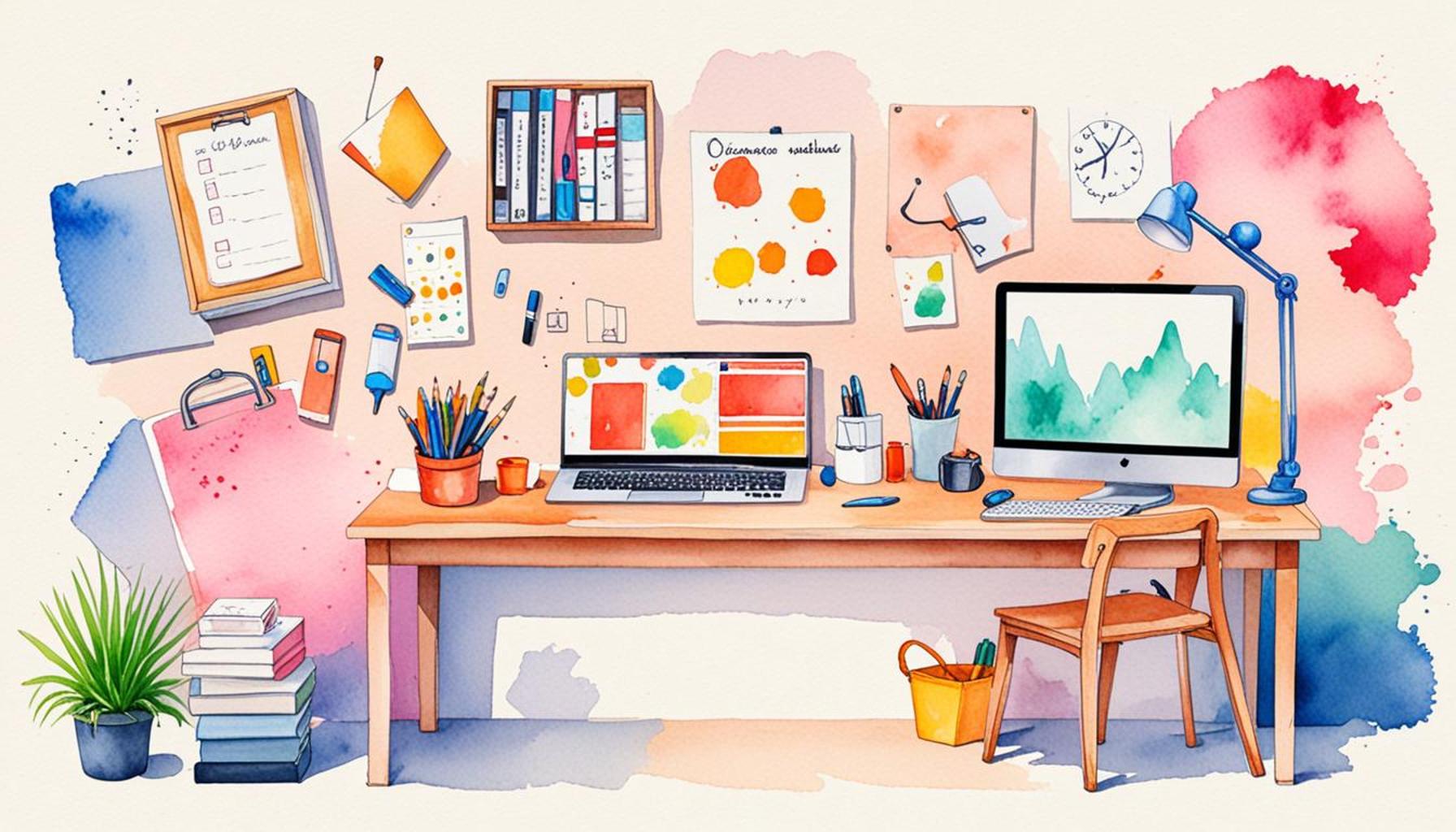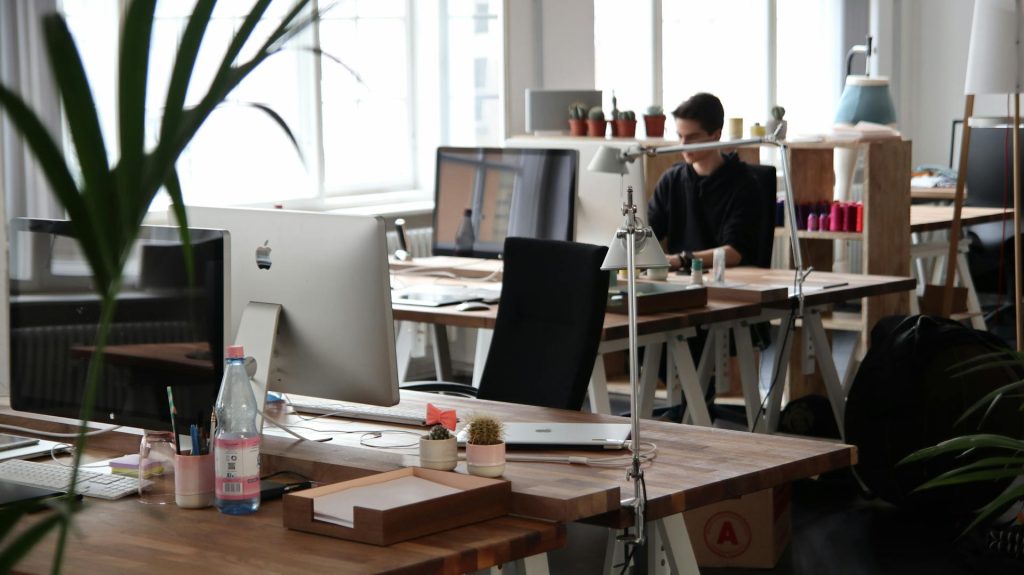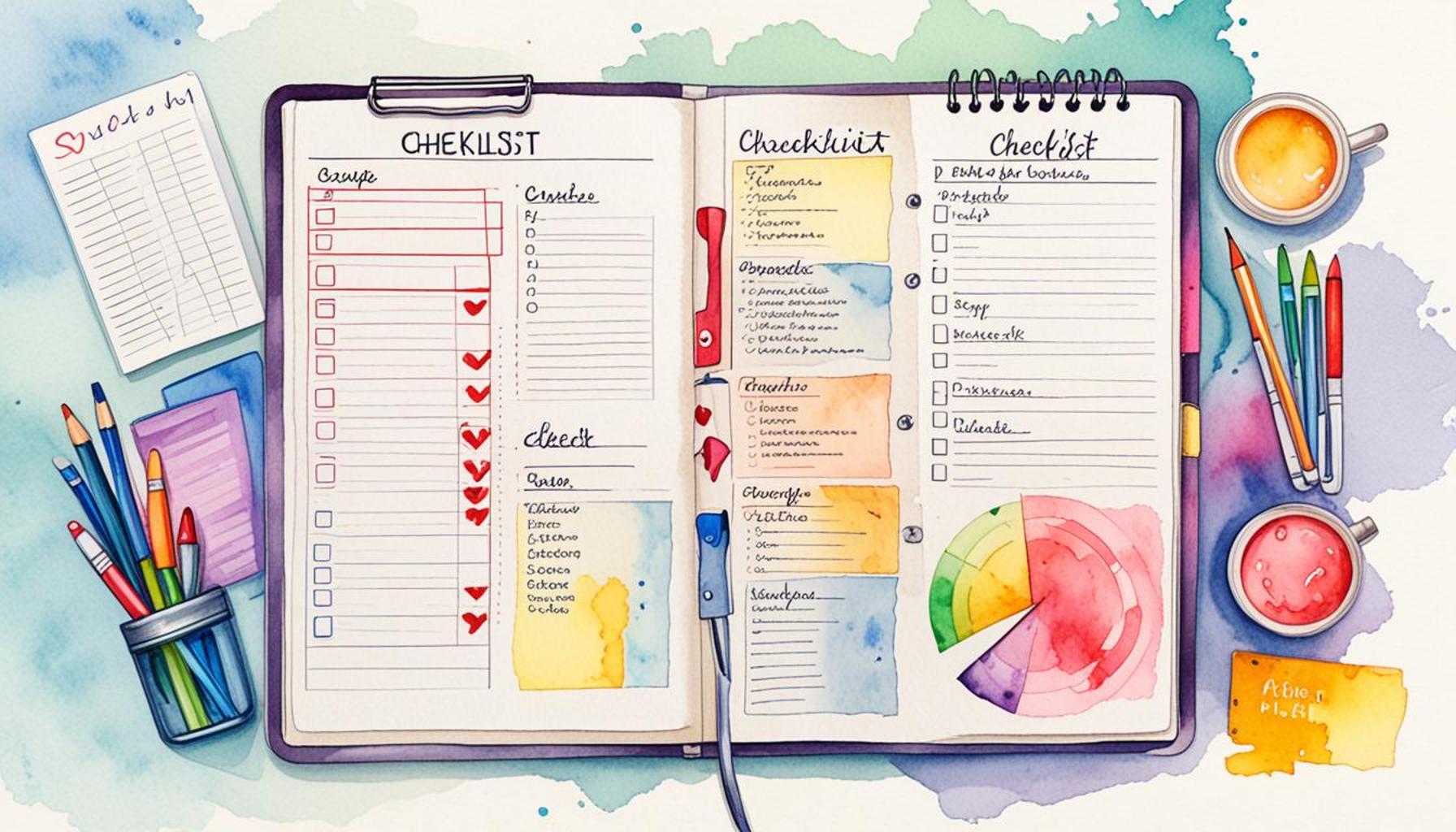Minimalist Organization Strategies for a More Efficient Workspace

Why Minimalist Organization Matters
In an age where distractions abound, creating a streamlined and efficient workspace is essential. When surrounded by clutter, both physical and mental, maintaining focus can become increasingly challenging. Minimalist organization strategies emerge as a powerful avenue for enhancing productivity and clarity in the workplace.
One of the fundamental principles of minimalism is the reduction of clutter. This involves a thorough examination of what items are genuinely necessary for your daily tasks. For instance, consider clearing out old paperwork, outdated reference books, or items that haven’t been used in months. This can be particularly impactful in office settings where storage space is limited. Research shows that a clean workspace can reduce stress and lead to better decision-making, paving the way for a more effective workday.
Another key concept is the clear desk policy. By maintaining only the essentials on your desk, you cultivate an environment that nurtures concentration. Limit your workspace to necessities like your computer, a notepad, and a pen. An effective example can be seen in many modern tech companies, where employees adopt “clean desk” policies that require them to leave their workstations tidy at the end of each day. This habit not only promotes cleanliness but also saves time and reduces anxiety as you start each new day with a fresh slate.
In addition to reducing clutter and adopting a clear desk policy, implementing smart storage solutions is vital. Utilizing organizational tools such as drawer dividers, file organizers, and wall-mounted storage can help keep your space minimalist, as these elements maximize your workspace without overcrowding it. For instance, vertical file holders can keep documents accessible while freeing up desk space for more pertinent tasks.
Effective organization fosters not just efficiency but also a sense of calm. A well-structured workspace can significantly influence your mood and performance. By embracing the minimalist philosophy, you can transform your environment into a hub of creativity and productivity.

Simple strategies can yield remarkable results. For example, prioritizing tasks using methods like the Eisenhower Box can clarify what demands your immediate attention versus what can wait. Additionally, leveraging digital tools like project management software can streamline your workflow, allowing you to spend less time organizing and more time executing.
If you are ready to regain control over your workspace, minimalist organization offers a pathway toward improvement and enjoyment in your daily work life. Small adjustments in your setup not only create a more inviting atmosphere but also enhance your efficiency, enabling you to succeed in achieving your goals.
DISCOVER MORE: Click here to enhance your productivity
Embracing Minimalism: Key Strategies for a Productive Workspace
To truly harness the power of minimalist organization, it’s essential to implement several practical strategies that can transform your workspace into an oasis of efficiency. These strategies revolve around intentionality, prioritization, and thoughtful decluttering, all of which contribute to a smoother work experience.
1. The Art of Decluttering
At the core of minimalism lies decluttering—a concept that extends beyond merely getting rid of items you no longer need. It involves a mindful assessment of your workspace and determining which objects truly serve a purpose in achieving your professional goals. To effectively declutter, consider the following steps:
- Assess Regularly: Schedule decluttering sessions on a weekly or monthly basis to continually refresh your workspace.
- Be Ruthless: If an item has not been used in the past year, ask yourself if it truly needs to take up space in your environment.
- Digitize When Possible: Transitioning physical documents to digital formats can significantly reduce paper clutter and make information easier to access.
Implementing these steps can help create a workspace that is not only visually appealing but also conducive to productivity. By stripping away the non-essential, you allow your focus to zero in on the tasks that matter most.
2. Designating Functional Zones
Another effective strategy is to establish distinct functional zones within your workspace. By categorizing areas for different types of work or activities, you can improve your organizational flow and minimize distractions. For instance:
- Task Zone: Designate an area specifically for focused work, equipped with necessary tools and materials.
- Creative Zone: Set aside space for brainstorming and creative pursuits, perhaps with a whiteboard or sketchpad.
- Collaborative Zone: If working with others, establish a separate area for meetings and discussions.
Creating these zones not only organizes your work tasks but encourages the right mindset for each kind of activity. This not only aids efficiency but provides a physical boundary that can help eliminate distractions.
3. Implementing a Minimalist Digital Workspace
In today’s digital age, maintaining a minimalist approach extends to our online environments as well. A disorganized computer can be just as distracting as a cluttered desk. Here are a few ways to streamline your digital workspace:
- Organize Files: Use folders and subfolders effectively to keep digital documents organized and easy to retrieve.
- Unsubscribe: Regularly clean out your email inbox by unsubscribing from newsletters and notifications you no longer read.
- Limit Applications: Keep only those applications on your devices that contribute to your productivity, removing unnecessary distractions.
By taking control of both your physical and digital spaces, you create a holistic environment primed for focus and effectiveness. This alignment not only enhances workflow but cultivates a sense of tranquility in your daily tasks.
As you explore these minimalist organization strategies, remember that small, consistent changes can have a significant impact on your overall workspace efficiency. The goal is to create a productive atmosphere where your creativity and efficiency can thrive without the weight of excess clutter. Embrace the strategy that resonates most with you, and watch your workspace transform into a hub of productivity.
Embracing a Minimalist Approach
In today’s fast-paced world, minimalist organization strategies can redefine how we view our workspace and enhance our productivity. By eliminating clutter and focusing on what truly matters, individuals can create an environment that fosters concentration and creativity.
The Power of Decluttering
Decluttering is a foundational element of minimalist organization. By removing unnecessary items, individuals can gain clearer working space and improve mental clarity. A clean workspace not only helps in enhancing focus but also reduces stress, allowing individuals to tackle tasks more efficiently without distractions.
Streamlining Tools and Resources
Another pivotal aspect is identifying and utilizing tools that promote efficiency. Consider tools like digital task managers or centralized communication platforms that minimize time wasted on searching for information. The right resources can streamline workflow, reducing the burden of decision-making and improving overall performance.
Prioritizing Functionality
When designing a minimalist workspace, it’s crucial to prioritize functionality. Select furniture and tools that serve multiple purposes. For instance, a desk with integrated storage not only saves space but also maintains an organized appearance. This thoughtful approach ensures that every item within the workspace contributes to achieving targeted goals, thus enhancing productivity.
Cultivating a Mindful Workspace
Finally, a mindful workspace encourages individuals to adopt intentional habits that align with their productivity goals. Regularly reassessing what is in your workspace and why it’s there fosters a habit of intentional organization. This method not only retains a minimalist environment but continually optimizes efficiency.
| Advantages | Description |
|---|---|
| Improved Focus | A clutter-free environment heightens concentration and reduces distractions. |
| Enhanced Creativity | Fewer physical distractions allow the mind to wander and innovate freely. |
Exploring the world of minimalist organization strategies can lead to a more intentional and productive workspace. As individuals begin to embrace these strategies, the journey toward a more efficient workspace becomes an invaluable asset in their professional endeavors.
DISCOVER MORE: Click here to simplify your daily life
Streamlining Processes for Enhanced Workflow
Beyond physical and digital decluttering, employing streamlined processes is integral to maintaining an efficient minimalist workspace. These processes revolve around optimizing workflows, reducing redundancy, and enhancing focus—all essential for maximizing productivity.
4. Adopt the Two-Minute Rule
The Two-Minute Rule, popularized by productivity expert David Allen, is a simple yet powerful strategy. The premise is straightforward: if a task takes less than two minutes to complete, do it immediately. This approach prevents minor tasks from accumulating and overwhelming your workspace. By focusing on quick completions, you not only clear small actions off your to-do list but also maintain momentum throughout your workday.
- Example: Responding to an email, filing a minor document, or making a quick phone call can all be done in two minutes or less. By tackling these immediately, you prevent them from becoming disruptive distractions later.
5. Utilize Task Management Tools
Incorporating task management tools into your workflow creates a systematic approach to your responsibilities, eliminating chaos and confusion. Software like Trello, Asana, or Todoist provides a visual representation of tasks, allowing you to categorize, prioritize, and track your progress. This structured organization is essential for a minimalist workspace, as it complements your decluttering efforts and allows you to manage your time effectively.
- Benefits: Task management tools enable task delegation, deadlines, and reminders, ensuring nothing is overlooked. They can also reflect the simplicity of a minimalist ethos by helping you focus solely on what is essential.
6. Schedule Regular Breaks
Integrating regular breaks into your work routine is another essential strategy for fostering a minimalist workspace. Studies reveal that taking short breaks can significantly enhance productivity and creativity. By stepping away from your workspace, you clear mental clutter, allowing for renewed focus when you return.
- Pomodoro Technique: This time management method encourages 25 minutes of concentrated work followed by a 5-minute break, promoting efficiency while minimizing fatigue.
- Mindfulness Breaks: Consider incorporating brief mindfulness or stretching exercises to center yourself during these pauses, reinforcing the minimalist ethos of clarity and intention.
7. Establish a Return-to-Home Policy
To maintain a minimalist environment, develop a return-to-home policy for all your workspace items. Every tool, document, and piece of equipment should have a designated spot, and after each use, ensure they are returned. This practice reduces clutter and the mental load that comes with constantly searching for misplaced items.
- Implementation: Label storage areas and create a visual guide for where items belong. This not only fosters a sense of order but also speeds up transitions between tasks when everything is easily accessible.
The emphasis on process streamlining through these strategies cultivates a disciplined and systematic workspace that can adapt to your professional needs. The combination of immediate task completion, structured management tools, balanced work breaks, and a commitment to maintaining order creates an environment conducive to productivity. Experimenting with and refining these minimalist organization strategies can be pivotal in achieving a workspace that facilitates both focus and creativity.
DISCOVER MORE: Click here to unlock the benefits of saying no
Conclusion: Embracing Minimalist Organization for Optimal Efficiency
In a world inundated with distractions and clutter, adopting minimalist organization strategies can revolutionize your workspace for improved focus and productivity. By emphasizing a streamlined environment, you create a sanctuary that supports not only your professional tasks but also your mental clarity. The journey to a more efficient workspace begins with decluttering—both physically and digitally. As we’ve explored, integrating techniques such as the Two-Minute Rule, leveraging task management tools, and instituting regular breaks can transform the way you approach daily responsibilities.
Moreover, establishing a return-to-home policy ensures that order is maintained, and accountability is fostered within your work environment. These practices not only minimize chaos but also empower workers to capitalize on their time and resources effectively. As you delve into these strategies, consider this process a journey towards cultivating a more intentional approach to work. Each step taken toward minimalist organization is a stride toward achieving a workspace that is both functional and inspiring.
Ultimately, embracing minimalism in your organizational strategies can lead to enhanced efficiency while reducing overwhelm. By prioritizing simplicity and intention, you can discover new ways to navigate your tasks, achieve your goals, and foster a healthy work-life balance. As society continues to evolve, the principles of minimalism stand firm as a beacon of clarity and focus, inviting you to redefine your workspace to serve your best self.


